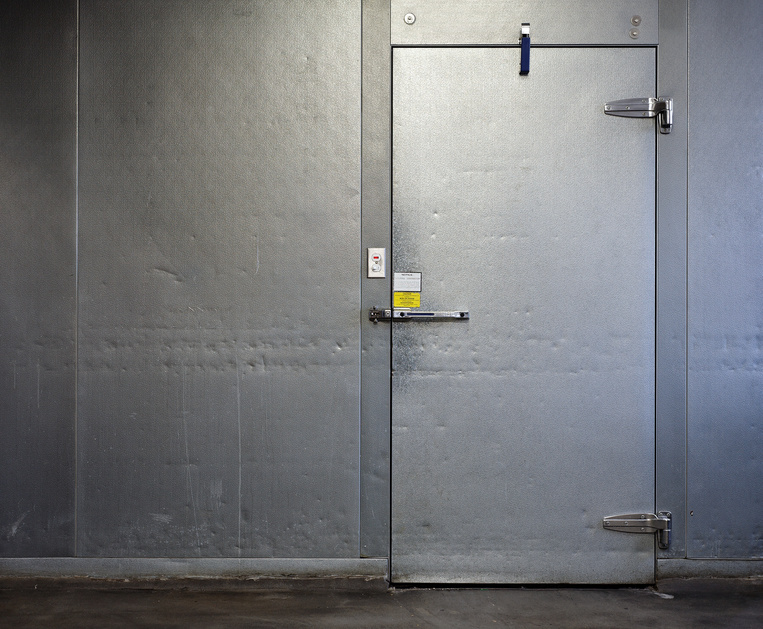
It wasn’t long ago that an employee of the Westin Peachtree Plaza was found dead inside of a walk-in freezer in Atlanta, GA. These tragic stories are a grim reminder of why many businesses develop safety procedures in the first place. However over time it seems we naturally become desensitized to such safety procedures—we get busier, work faster, and without a vigilant “safety leader” to help staff stay on track, it’s easy to forget best practices.
If you don’t have safety procedures surrounding your walk-in cooler, now’s the time to make them. Set the guidelines to your staff and be vigilant in making sure they are respected and adhered to. Here are just a few suggestions to get you started:
Knock In/Knock Out
That small window on the door of your walk-in cooler does little to notify you if someone is going in or out of the walk-in. Avoid potential spills and painful collisions by giving a knock (or two) when you’re about to enter or leave the walk-in to notify the person on the other side.
Technical training goes a long way
A life could have easily been saved had the employee known how to turn off the evaporator within the condensor unit. Some manufacturers have their evaporators come with an on/off switch that can be easily toggled, but if your evaporator doesn’t happen to have one ask your installer to add one (it’s fairly simple to do and can be done at any time). Sure, you’ll lose thousands of dollars’ worth of food by switching it off, but you’ll have a life—and who can put a price on that?
Do not tolerate walk-in shenanigans of any kind
From being “scream therapy” for chefs, to not-so-secret hookup locations for randy employees, walk-ins have seen their fair share of uses beyond food storage. Problem is, these types of activities downplay the seriousness of the walk-in itself, causing staff to be desensitized to any safety procedures you might have in place. It’s up to you to take a firm zero-tolerance policy of any walk-in activity occurring beyond simple food storage. And, with all too common stories of employees intimidating each other by trapping them within the space, you can bet your staff will welcome an end to these behaviors as well.
Closing manager responsibilities
Before the final lock there should always be a full sweep of the dining room, kitchen, and coolers to ensure nothing is left on and no one is left behind. It almost seems silly to mention this, because many find it to be basic common sense. That said, tragic accidents could easily have been avoided had there been another person thoroughly checking the space before heading home.
Consider adding a panic button
Many manufacturers like Honeywell specialize in creating panic buttons for walk-in freezers. Panic buttons send a data message to a control panel that alerts users when someone is in distress. Many panic buttons can even be set up by you to determine who it should alert (management staff, police, ambulance, etc).
Good ‘ol fashioned survival mode
Employees should know that damaging equipment, product, etc. is not a concern when their lives are in real danger. Empower your employees to do whatever is necessary if they find themselves trapped in the walk-in; pull wires, rip apart the evaporator, do whatever it takes to stop the flow of cold air. In the event of an emergency, anything goes.
What types of safety procedures do you have in your restaurant?
 Corner Booth Blog | TundraFMP Restaurant Supply, News & Equipment Blog
Corner Booth Blog | TundraFMP Restaurant Supply, News & Equipment Blog




Properly train your employees on how a walk-in operates. Modern walk-ins are designed with hardware that, if it hasn’t been modified should allow employee’s to exit the unit even it the unit is in locked position. Proper training of do’s and don’t could go along way in solving these issues.